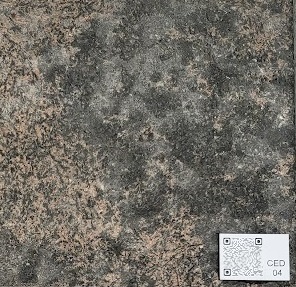<NOTE: CONTENTS ARE BETA VERSION – SUBJECT TO FACT CHECK AND VERIFICATION>

Whinstone was formed during the Carboniferous period and made mostly of Plagioclase Feldspar and Clinopyroxene along with smaller amounts of other minerals such as Biotite.
This red variation is relatively rare in occurrence.
| Reference | CED04 |
| NAME | Red Whinstone |
| TYPE | Gabbro/Dolorite |
| GEOLOGY | Carboniferous |
| COUNTY | Scotland |
| COLOUR | Dark Grey |
| TEXTURE | |
| BLOCK SIZE LXBXH (mm) | Up to 2.5m x 1.5m x 1m |
| SUITABILITY | Kerbs, setts, paving |
| USES (1) | |
| USES (2) | |
| USES (3) | |
| USES (4) | |
| Stone Names |
Credit: Simon Copsey <simoncopsey@cedstone.co.uk>
“Permo-Carboniferous Whin Sill Complex, Great Whin Sill Whinstone The Great Whin Sill is intruded into the Alston Formation and crops out in Northumberland as a discontinuous ridge, extending from the northeast corner of the county (Fenwick, Belford, Bamburgh), via coastal areas (Beadnell, Embleton, Craster), to near Longhoughton and south of Alnwick. The sill runs in a near-continuous belt through south-central Northumberland, stretching from Kirkwhelpington westwards (north of Hallington, Humshaugh and Newbrough) to Greenhead. The outcrop of the Great Whin Sill is typically represented by a linear topographic high, and this produces dramatic settings for the several prestigious structures built upon it, such as Bamburgh Castle. Figure 20: Bamburgh Castle, built on top of the Whin Sill. 19 The sill rocks (Whinstone) comprise dark grey-black to black, fine to medium-grained, weakly porphyritic, quartz-dolerites, with grains up to 2mm in diameter. The rock contains small phenocrysts of plagioclase feldspar, with pyroxene (mainly augite, hypersthene and pigeonite) set in a dark grey, fine-grained groundmass. Significant amounts of opaque iron oxides and pyrite are also present. Many rocks have interstitial quartz-alkali feldspar intergrowths. There is a marked decrease in grain size at the margins of the sill, where the rock comprises a very fine-grained tachylite. In the upper half of the sill, the dolerite is locally cut by flat-lying sheets, veins and segregations of coarse-grained pegmatitic dolerite (with crystals up to 20mm in length). Figure 21: The Blue Bell Inn, Embleton. Whinstone. Figure 22: The Victoria Hotel, Bamburgh. Whinstone with Stainmore Formation sandstone dressings and quoins. 20 Whinstone has been employed only occasionally as a local building stone (at Bamburgh and Embleton, for example) and in stone walling near accessible outcrops. However, its hardness and resistance to erosion make it an excellent roadstone and aggregate. Whinstone was quarried from several locations at Embleton, Bamburgh, Belford and Craster, and it was worked for concrete, roadstone, aggregate and building stone at Kirkwhelpington (East White Hill Quarry), Divet Hill Quarry and Keepershield Quarry. It was also extracted from large quarries at Barrasford and Colwell (Swinburne Quarry), although these were worked mainly for roadstone and aggregate.” From https://historicengland.org.uk/images-books/publications/building-stones-england-northumberland/bse-northumberland/
FOR HERITAGE USE
| Stone Name | Locality for past use of this stone (from Building Stones of England English Heritage – excel file) |
| Whinstone | Northumberland Buildings (https://historicengland.org.uk/content/docs/advice/building-stones-england/bse-excel-northumberland/); |
| Building using this stone (from Building Stones of England English Heritage – excel file) | |
| Whinstone | Northumberland Buildings (https://historicengland.org.uk/content/docs/advice/building-stones-england/bse-excel-northumberland/); |
| Stone Name | Building Stones of England (English Heritage Regional Stone Atlases) |
| Whinstone | Northumberland. Building Stones of England https://historicengland.org.uk/images-books/publications/building-stones-england-northumberland/bse-northumberland/ |
Disclaimer: Any external linked sites are not University owned and may no longer work. You access these external links at your own risk.
References:
Further reading
Industrial minerals, geology and man, Northern England – MediaWiki
https://earthwise.bgs.ac.uk/index.php/Industrial_minerals,_geology_and_man,_Northern_England
See also CED 03 Whinstone | Stone Library